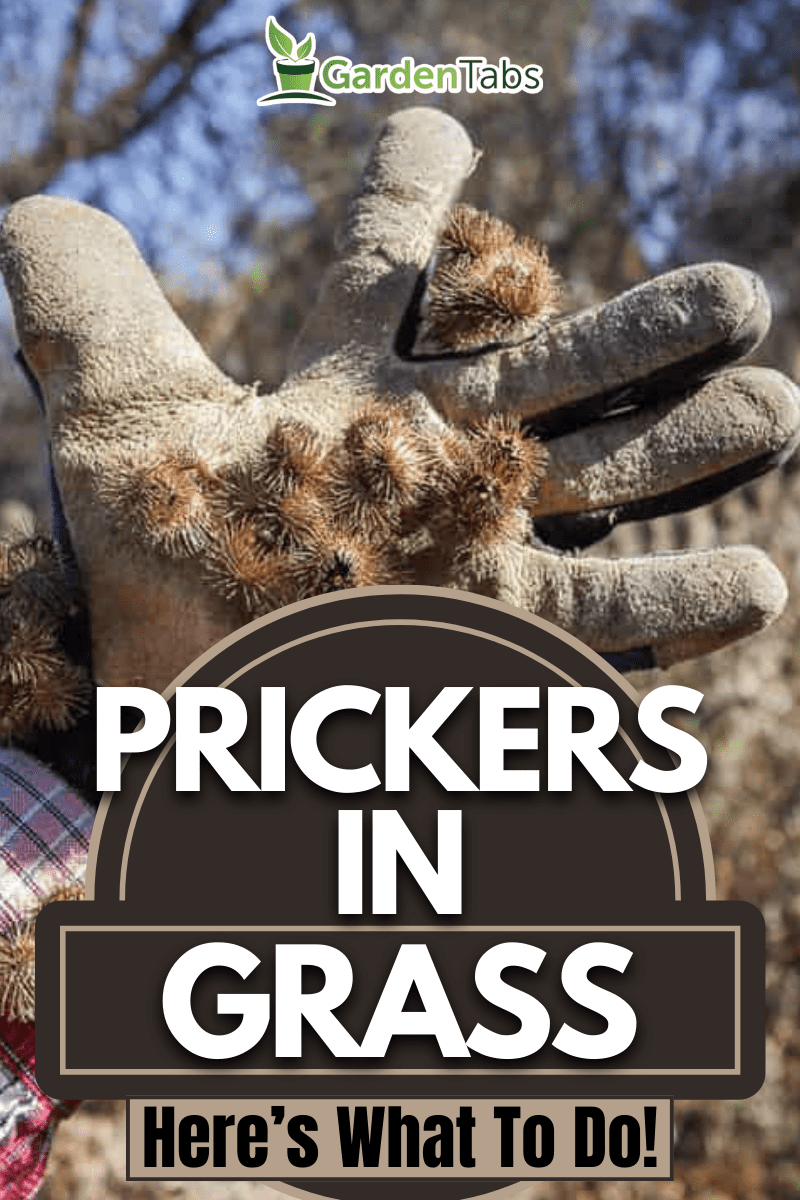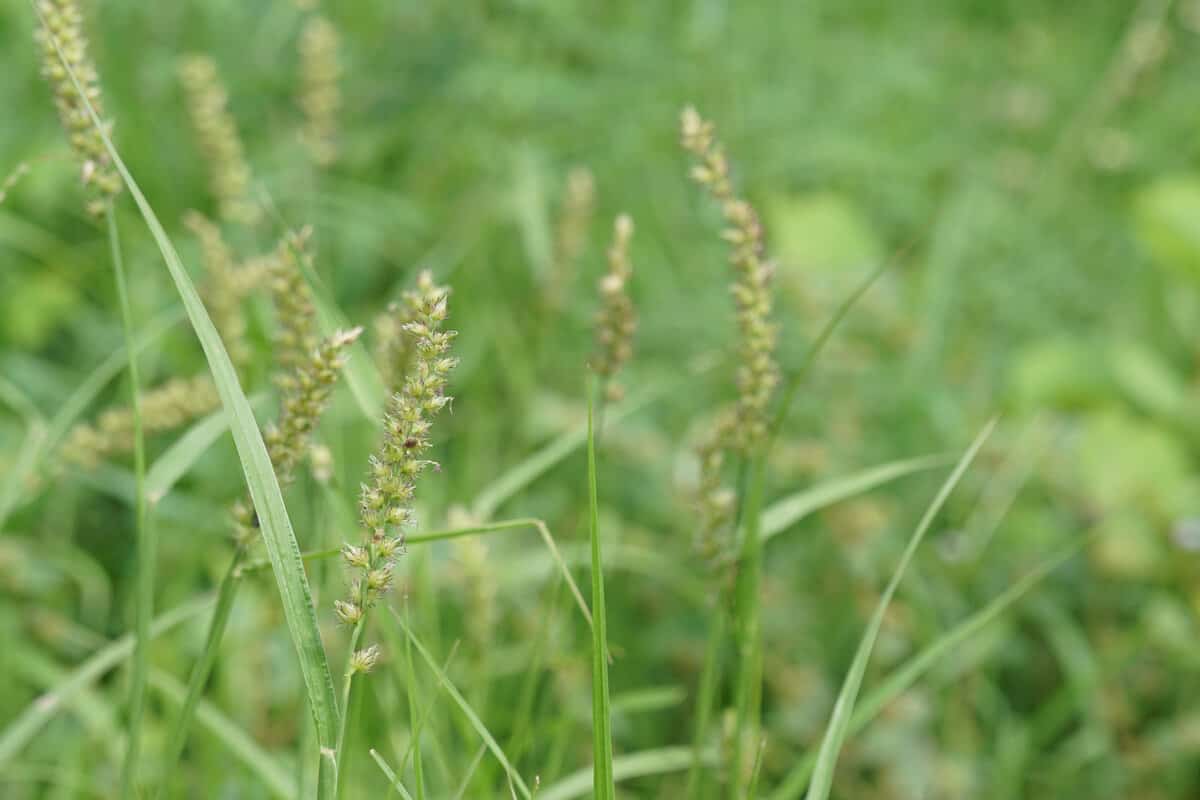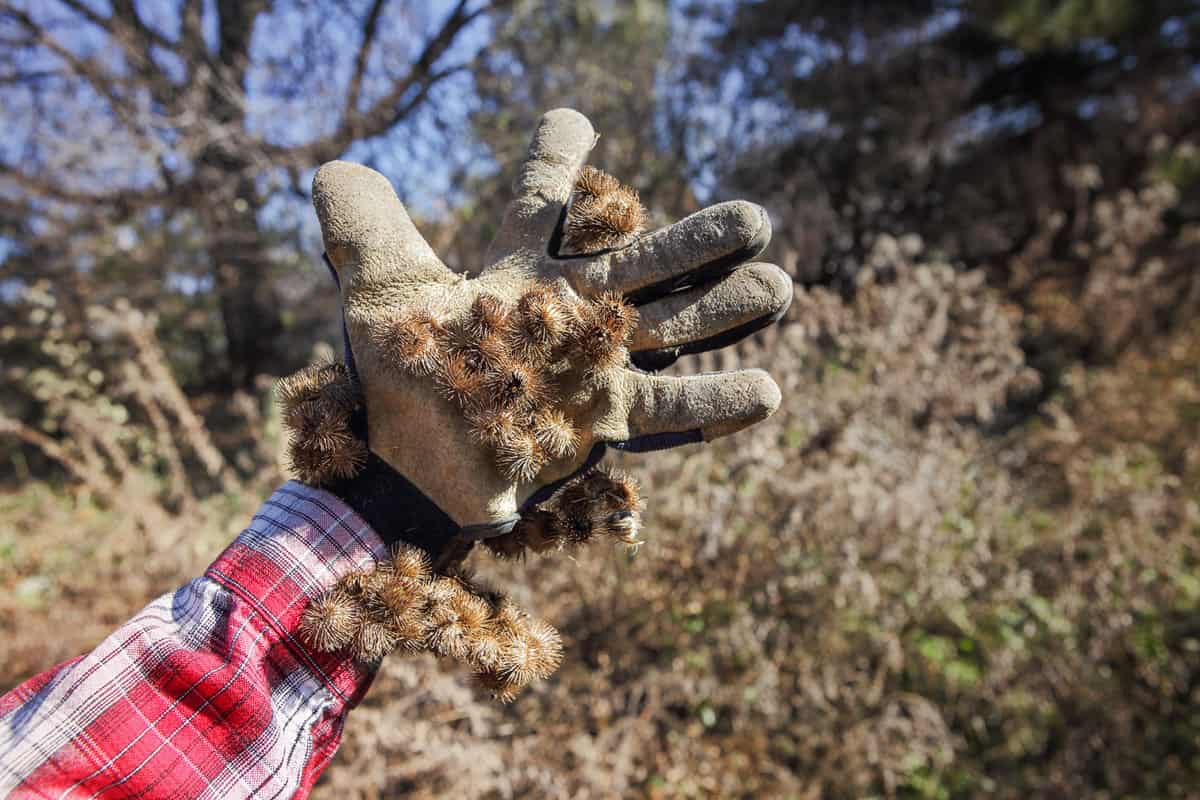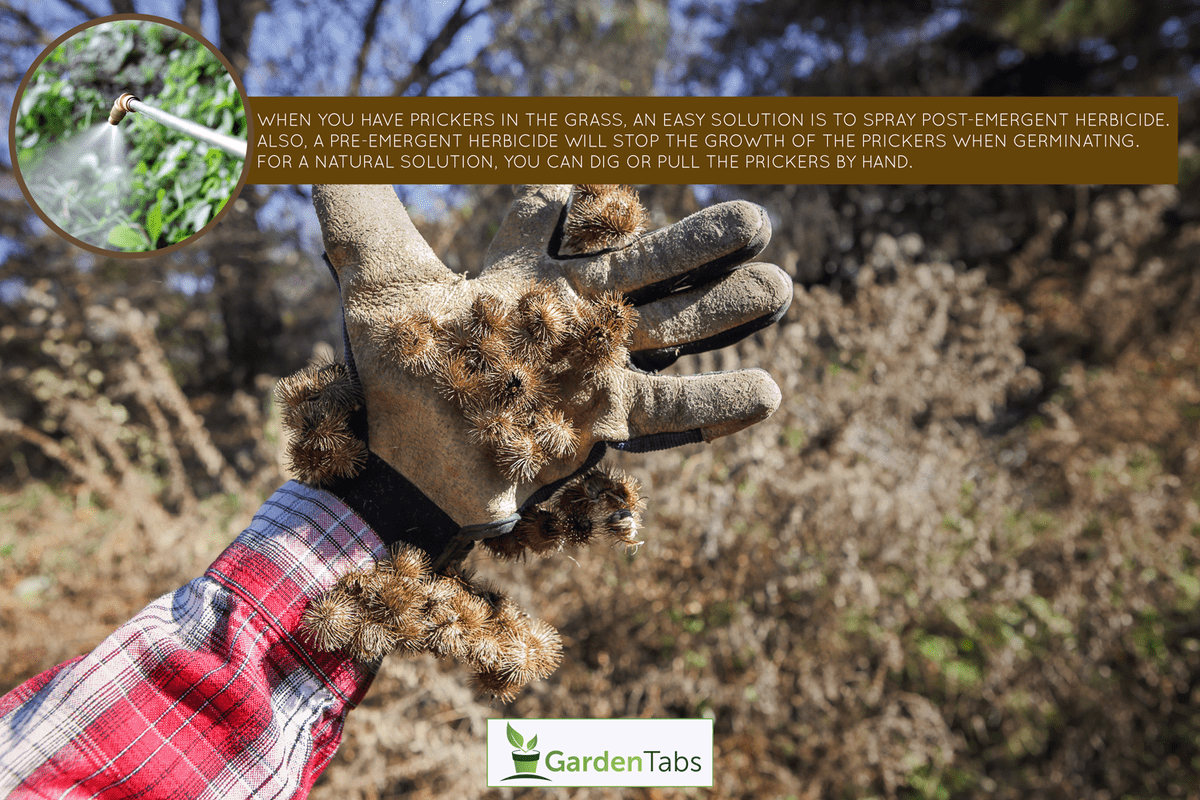It is annoying to experience sharp weeds when walking barefoot on your lawn. You might feel stressed about these prickly things because they are painful to remove. Although it is challenging to keep prickers away, we have researched reliable sources to find out what you need to do.
When you have prickers in the grass, an easy solution is to spray post-emergent herbicide. Also, a pre-emergent herbicide will stop the growth of the prickers when germinating. For a natural solution, you can dig or pull the prickers by hand.
Regardless of the solution you follow, you can make the grass pricker-proof naturally by giving it the right care. Continue reading to understand pricker in the grass and what you need to do.

What Are The Prickers In Grass?
Weeds that take over the grass on your lawn can have prickers that are painful when stepped on. There are sticky prickers that get stuck in clothing. Some prickers have poison that causes skin rashes and red bumps. Regardless of the type, prickers are annoying.
Here are the common weeds that bring prickers in the grass:
- Summer annual grassy weed - Also known as field sandbur or grass bur. This weed is sharp, spiny, and painful when you come in contact with it. Removal from clothing is also challenging. The weed is most common in Texas, with dry and sandy soil.
- Lawn burweed - A winter annual, this weed rapidly multiplies in the warm early spring. This weed will form "stickers" that are spine-tipped.
- Goathead - This weed is invasive and produces long-thorned burs that can pierce gloves, footwear, tires, and skin. Once pricked, you can feel a sharp pain leading to infection.
Even though the prickers are tiny, they are tenacious. The nontoxic prickers can be painful to anyone who gets in contact.

You should stop the propagation of the weeds that are bringing the prickers into your lawn. Doing so can keep your lawns safe for humans, animals, and plants. Find out below what to do with these prickers.
What To Do With Prickers In Grass?
There are varying ways to suppress the spread of the weeds. You can either follow the organic way or the harsh, chemical-based solution.
The location, weather, and soil type can influence the effectiveness of pricker removal. Some weeds proliferate and become invasive.
It is also critical to schedule the timing of removal so that the prickers are still vulnerable. The aim is to stop the spread when the weeds start growing in fall.

Follow the solutions below on how to deal with prickers in the grass.
1. Organic Removal
There are natural solutions for eliminating prickers, if you're eco-conscious.
If you have the time, you can remove the burs and stickers by hand. Doing so is tedious, but you can spare the grass from harsh chemicals.
You will need a garden shovel, rake, scuffle hoe, or a crabgrass hand weeder tool. Do not forget to use thick gloves to protect your hands.


Click here to get this product on Amazon.
With your tools, remove the stickers by digging into the roots of the weeds. For loose prickers, you can rake them and remove them by hand. You might need a day or two to remove all the prickers from your lawn.
After removing, you should immediately dispose of the weeds in the garbage or burn them.
Here are other organic remedies you can use:
- Add a mixture of salt and baking soda to the leaves and base of the weed. The sodium takes out the moisture from the weed. The weed will die due to dehydration.
- Apply undiluted apple cider or vinegar to dehydrate the weed. Use a spray bottle for this method. Be careful not to spray on nearby plants and grass. You need to do this daily until the weed dies before you can gather the dead burs or stickers.
2. Chemical Removal
The goal is to stop the germination of the prickers from late spring. The grass needs proper care that includes proper fertilizer, mowing, and irrigation. With the right maintenance, the weeds cannot produce prickers.
One effective solution is to use a pre-emergent herbicide before the seeds develop and the soil temperature is 52° Fahrenheit.
If you are in Texas, apply the herbicide on April 1 or March 1 in southern areas. You must reapply every six weeks after the first application until September.


Click here to buy this product on Amazon.
If the weed continues to produce the prickers, you should use a post-emergent herbicide. MMSA and DMSA are the commonly used herbicides. When applying, follow the instructions of the product. It is best to apply the herbicide between May and July.


Click here to see this product on Amazon.
It is best to apply herbicides when the weeds are still young. The burs are tougher when they are mature, so you might need a stronger chemical herbicide to get rid of prickers.
What Method Will Work Best?
Both methods will work well, but it depends on what you want to achieve for your lawn.
If you want to sustain healthy grass, follow the organic way. If you want a quick solution and the prickers are too invasive, you can apply the herbicides.
For summer annual prickers like burs and goatheads, physical removal works well. The earlier you remove a germinating weed, the earlier you stop them from producing for the next season.
Can Herbicides Also Kill The Grass?
With the pesky prickers, you might choose to use herbicides as the fastest solution. Herbicides can be your last resort if no organic solution works.
According to the U.S. NPIC, there are selective weed killers that will not harm grass and other plants. On the other hand, a non-selective herbicide will kill all the plants.
As mentioned, the recommended herbicides for prickers are the pre- and post-emergent types. Among these two, the pre-emergent herbicide will likely prevent grass growth for a long time. Post-emergent herbicides will only target visible weeds, not the soil where weeds grow.
Before you buy that herbicide, it is important to read the entire product label or ask the NPIC for further details.
What To Do When You Get Prickers On Skin?
You might not be able to avoid having a few prickers stuck on your skin while getting rid of them.
Whether toxic or non-toxic, you should be careful when removing the prickers. You can get infections if you don't pull the spikes completely.

You need to use a leaf or cloth to get the prickers on your skin. If you feel that the spike remains, use a tweezer to pull it out from the skin.
If you need to go out on your lawn, always wear closed shoes instead of slippers or going barefoot. Use thick gloves to protect your hands from the prickers when tending your grass.
How To Prevent Prickers In Grass?
To keep from having prickers on your lawn, you need to maintain the health of your grass so the weeds will not produce prickers.
The prickers will not to thrive in thick, healthy grass. The denser the grass on your lawn, the less chance the prickers will have to multiply. You can also deprive the pricker weeds of sunlight with slightly high grass.
If you want to prevent grass burs or stickers in the future, you should water the grass on your lawn every week. Give 1-1.5 inches of water to your grass to dehydrate the prickers.
Furthermore, fertilizers are vital to keeping lush grass. You will avoid having weeds dominate if your lawn gets the nutrients it needs. Your lawn also gets the right soil pH to allow more grass and plant growth.

In Summary

If you have prickers on your grassy lawn, there are effective ways to eradicate them. You can use natural solutions to avoid killing your grass, but it requires time and effort.
The faster solution is to use herbicides. You can use the pre-emergent type to stop the growth of young pricker weeds. If the prickers are mature and spread rapidly, then use a post-emergent herbicide. However, the chemicals can kill grass and surrounding plants.
If you want to skip the solutions, you must maintain healthy grass on your lawn. By doing so, you can stop the growth of prickers and walk on the grass easily.
You can check out these posts to learn more about weeds:
